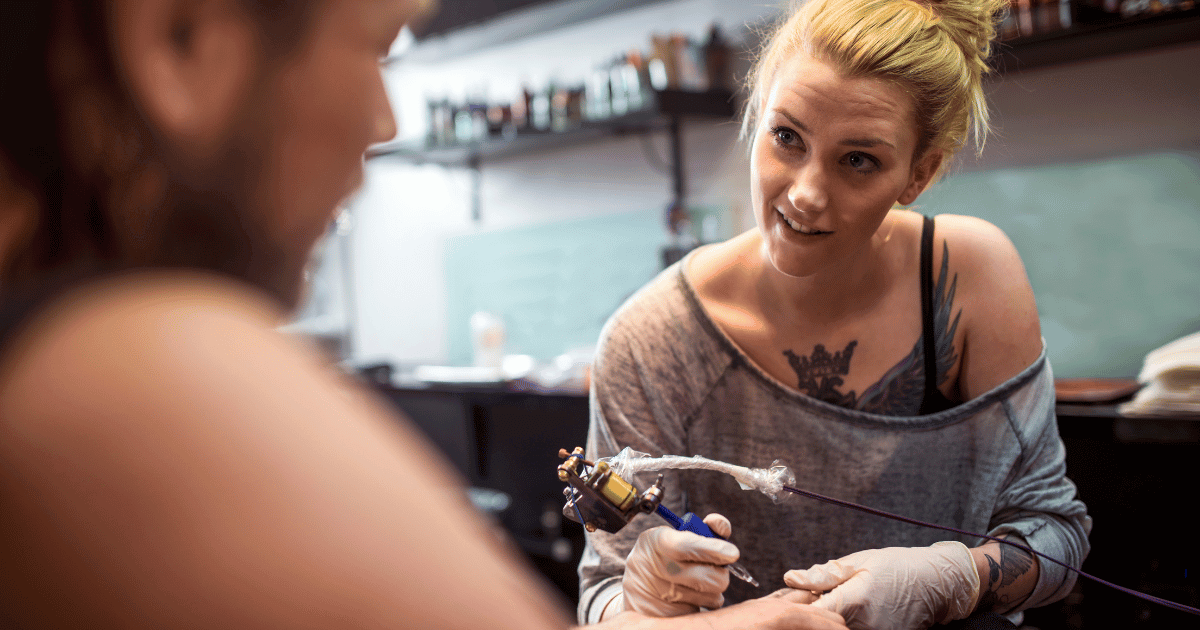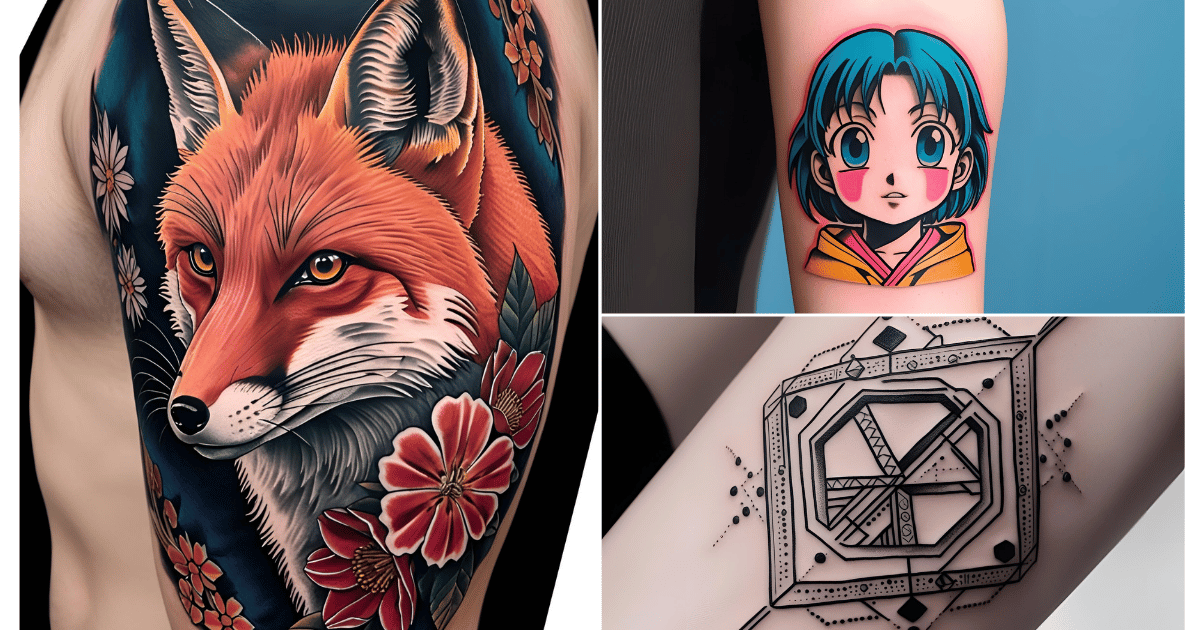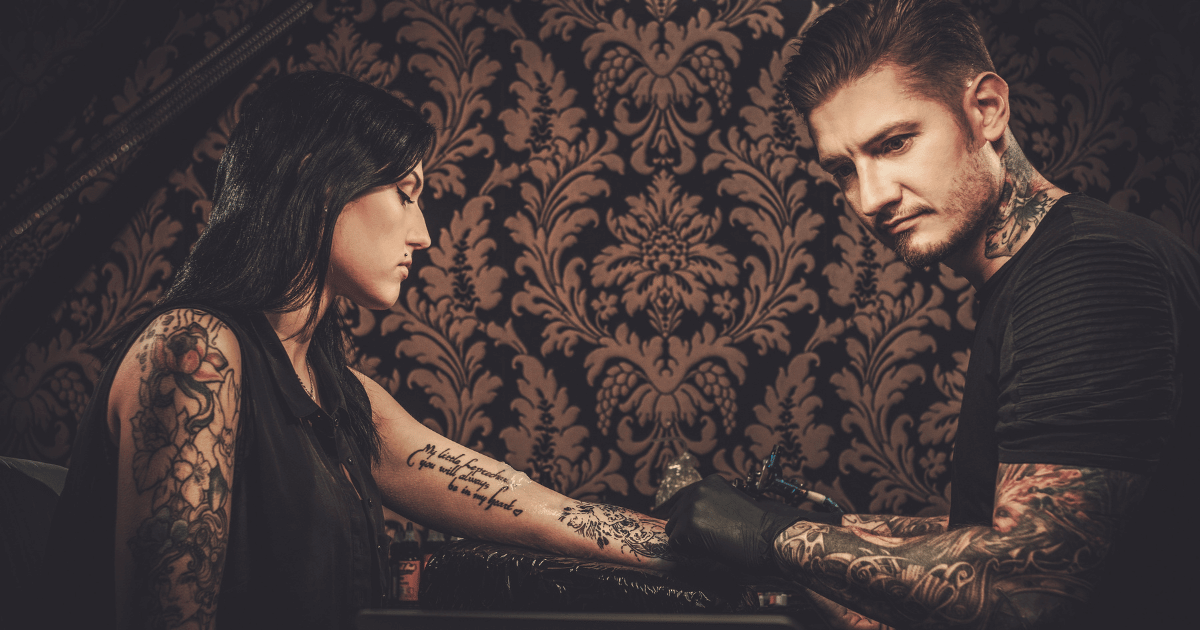Walking into a tattoo shop for the first time can feel like stepping into another world, buzzing machines, walls covered in art, and a whole different language flying around.
If you want to roll in like you belong (and you do), you’re gonna need to speak a little tattoo lingo.
Whether you’re getting your first tiny banger or you’re halfway through a full sleeve, understanding tattoo slang words will help you vibe with your artist, avoid rookie mistakes, and maybe even score a few cool points.
Let’s dive in, no gatekeeping here.
Why You Should Know Tattoo Slang (Trust Us)
Tattoos aren’t just a business, they’re a lifestyle. Artists and collectors built this culture on respect, tradition, and badass creativity.
Knowing a few key tattoo slang words shows you’re not just another tourist walking in off the street.
It helps you:
- Actually understand what your artist is explaining (instead of just nodding nervously).
- Avoid dumb mistakes like touching your stencil or asking for a “temporary tattoo.”
- Build real respect with the artist putting something permanent on your skin.
Bottom line: it’s about speaking the language of ink.

Essential Tattoo Lingo: What You’ll Hear (and Say) in the Shop
Here’s your cheat sheet. Memorize it. Own it. Live it.
- Freshie – Your new tattoo, still shiny and sore. Baby it.
- Blowout – When ink leaks under the skin and looks blurry. Not the end of the world, but not ideal either.
- Sleeve – A full arm (or leg) of tattoos. Can be one giant piece or a patchwork of designs.
- Flash – Pre-made designs you can pick right off the wall. (Pro tip: flash isn’t “less cool” than custom, it’s a legit tradition.)
- Custom Piece – Artwork drawn specifically for you. No one else will have it.
- Linework – The outlines of your tattoo. Clean linework = tattoo magic.
- Shading – Adding depth and dimension. Makes your piece pop.
- Stick and Poke – Hand-poked tattoos. DIY if you hate yourself, professionally done if you have taste.
- Tattoo Collector – Someone who gets tattoos from a bunch of different artists, like building an art gallery… on your body.
- Tap-Out Session – An epic, brutal tattoo marathon. How long can you last?
In-Shop Lingo: What the Crew Might Say
Tattoo artists have their own shorthand. Here’s the stuff you’ll hear in the wild:
- Session – Time on the chair. One session might be enough for small tattoos, big work needs multiple.
- Stencil – The purple outline of your design, slapped on your skin before the needle hits.
- Single Needle – Super fine, detailed tattoos using just one tiny needle. Pain? Eh, it’s delicate work, but still a needle.
- Cover-Up – A new tattoo over an old mistake (we’ve all been there).
- Touch-Up – Freshening up a tattoo that’s faded or healed weird.
- Saturation – Packing enough ink into the skin to make those colors rich and solid.
If you hear “let’s break for a smoke,” that’s your chance to stretch and sip some water but don’t get cocky.

Tattoo Styles: Learn the Lingo
Talking styles? Here’s the quick-hit guide so you don’t sound clueless:
- American Traditional – Bold lines, solid colors, classic designs (think eagles, daggers, pin-ups and roses your grandpa would respect).
- Neo-Traditional – Like traditional, but with more detail, more shading, a modern twist and a touch more drama.
- Blackwork – Big, bold designs done with solid black ink. Think tribal vibes, heavy patterns, no colors.
- Realism – Tattoos that look like actual photos. Serious wow factor, serious patience needed.
- Watercolor – Ink that looks like someone went wild with a paintbrush. Soft, colorful, usually no outlines.
- Tribal – Solid black shapes and patterns rooted in Polynesian, Samoan, and Maori traditions (and no, it’s not just random swirls, it’s deep culture).
- Minimalist – Clean, simple, lots of open space. Tiny tattoos are not less legit. Small doesn’t mean basic, tiny tattoos still pack a punch.
- Dotwork – Tattoos made up of hundreds (or thousands) of tiny dots. Super detailed. Crazy levels of patience (for you and your artist).
- Floral – Anything flower-inspired. Roses, peonies, lotuses, you name it. Can be dainty or absolutely savage, depending on the style.
- Geometric – Designs built from shapes, lines, and patterns. Think sacred geometry, mandalas, optical illusions, super satisfying to look at.
- Anime – Tattoos inspired by anime and manga. From full-on character portraits to tiny symbols only true fans will recognize. (Naruto sleeve, anyone?)
Tattoo Healing Slang: Aftercare Talk
After you get inked, your body’s got work to do. Here’s what’s normal:
- Peeling – Your skin will flake off. It’s gross but it’s part of the process. Don’t pick it!
- Itchy Phase – Happens when it’s healing. It’s torture. Slap it (gently) instead of scratching.
- Tattoo Balm – Special goop to keep your tattoo moisturized. (No, not regular lotion. Use the good stuff.)
- Scabbing – Tiny scabs are normal. Big chunky ones? You might have messed up aftercare.
- Second Skin – A thin protective wrap that helps tattoos heal faster with less scabbing. Magic, honestly.
Fun Tattoo Sayings You’ll Hear
Tattoo culture has its own little one-liners too:
- “No pain, no gain.” – Standard. If you want the art, you deal with the needle.
- “Ink therapy.” – Tattoos are cheaper than therapy (mostly) and you wear the results.
- “Under the gun.” – Literally under the tattoo machine.
And yes, we call it a “gun” sometimes. Artists are picky about that, though. Best to say “machine” if you’re trying to impress.
Pro Tips for Speaking Tattoo Lingo Like You Mean It
- Listen first, talk second. Artists can spot fake confidence a mile away.
- Respect the process. Your artist isn’t just drawing, they’re crafting something that’ll outlive you.
- Don’t name-drop lingo to show off. Use it naturally. If you don’t know a word, just ask. We respect that way more.

FAQ: Tattoo Lingo and Tattoo Slang Words
Q: What’s a “blowout” exactly?
A: It’s when the ink spreads under your skin because the needle went too deep. Looks a little blurry. Sometimes fixable, sometimes just a lesson learned.
Q: Is it lame to pick flash designs?
A: Nope. Flash is legit. Some artists specialize in flash. Just don’t grab something off Pinterest and expect it to be “custom.”
Q: How long can a tap-out session last?
A: Depends how tough you are. 6-8 hours is common. If you make it past 4, you’re already tougher than most.
Q: Should I ask for a “stick and poke” in a shop?
A: If they offer it, cool. If not, don’t ask a machine artist to bust out a stick and poke kit unless it’s their thing. (And definitely don’t DIY it unless you know what you’re doing.)
Final Ink-Spiration
You made it through the crash course, now you’re basically fluent in tattoo lingo and tattoo slang words.
Next time you hit up a shop, you’ll know exactly what’s going down, and you’ll be able to talk the talk while you walk out with fresh ink.
Ready to get that freshie?
Start planning. Start dreaming. Start speaking fluent tattoo.
See you under the gun.


